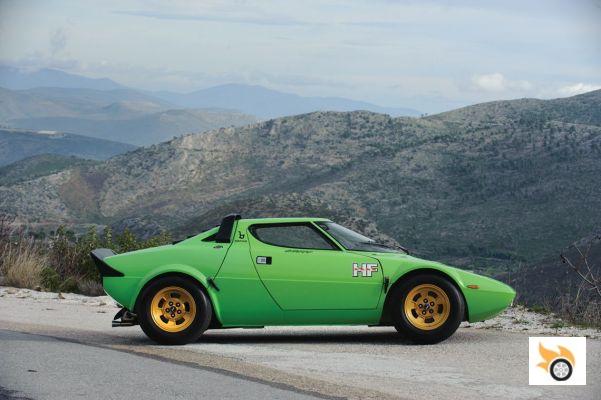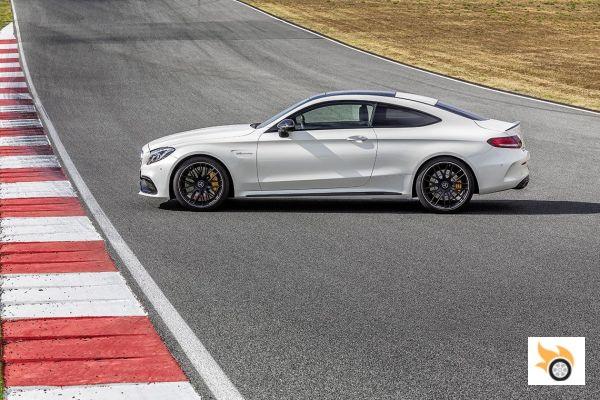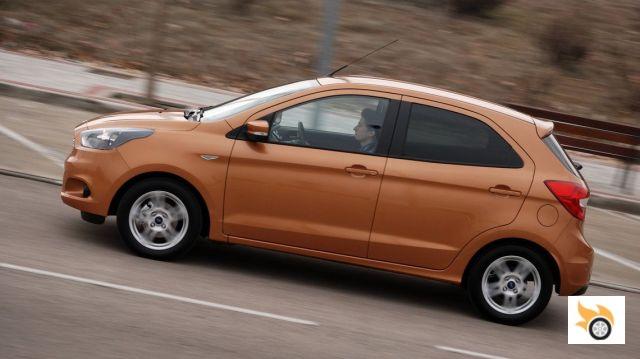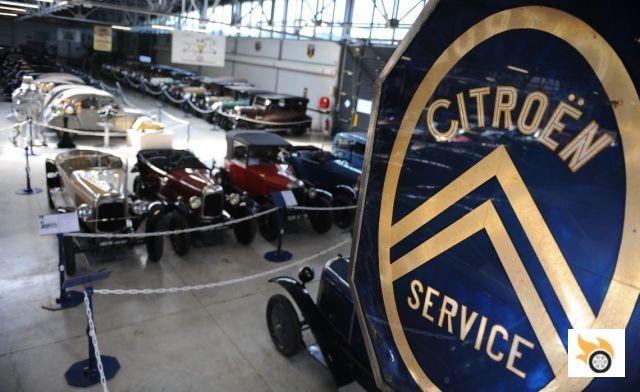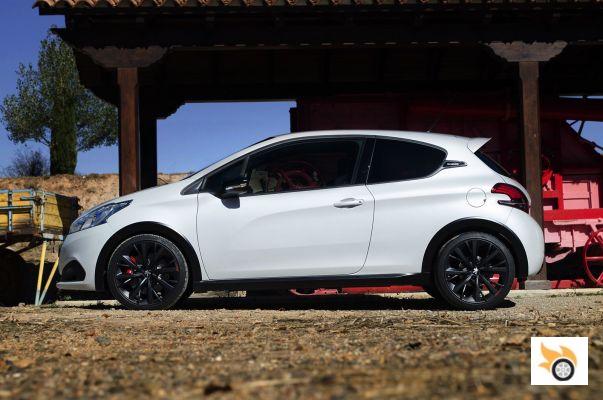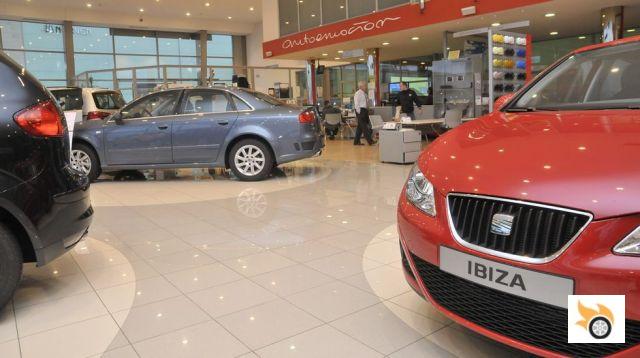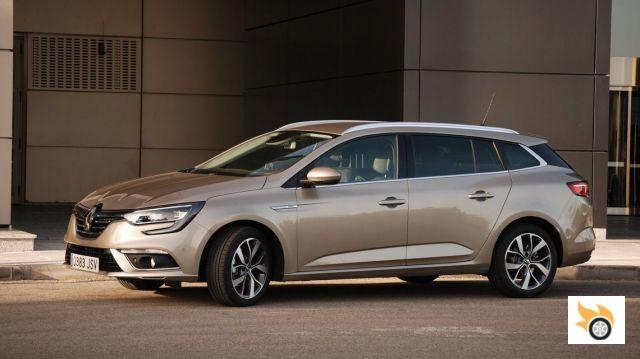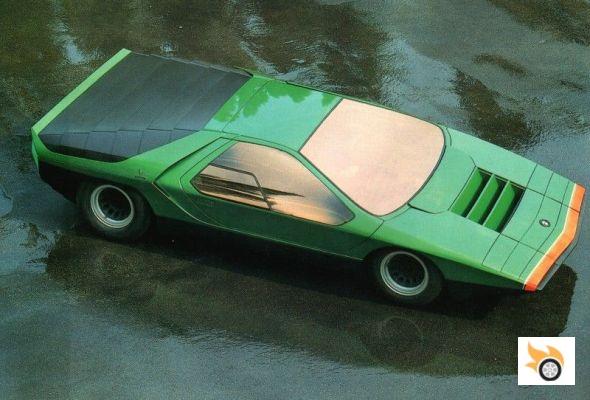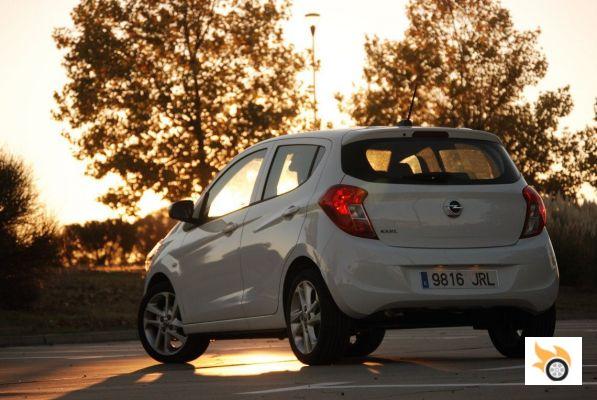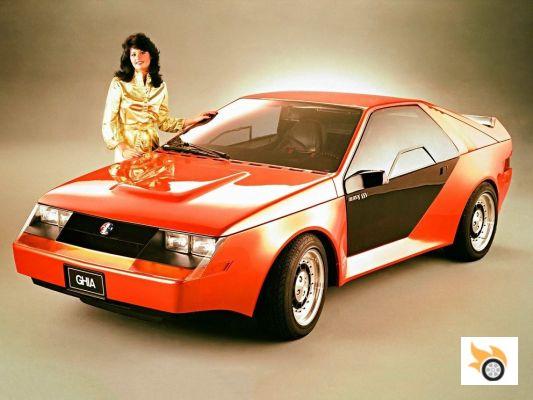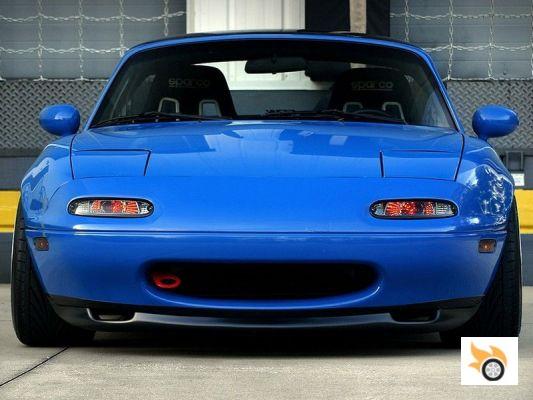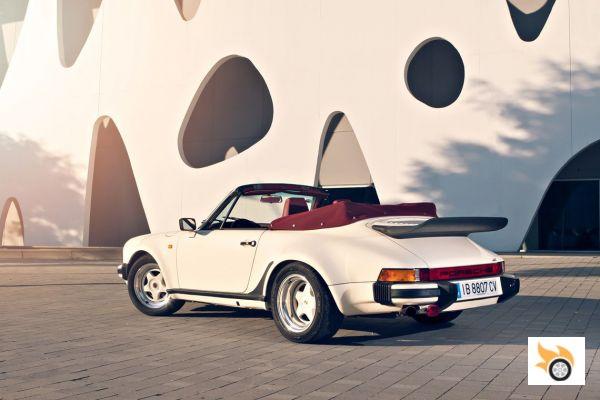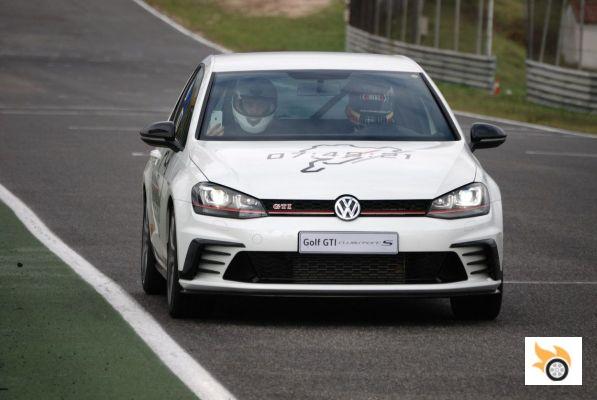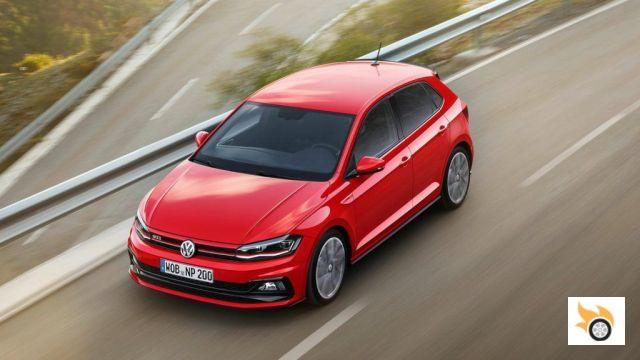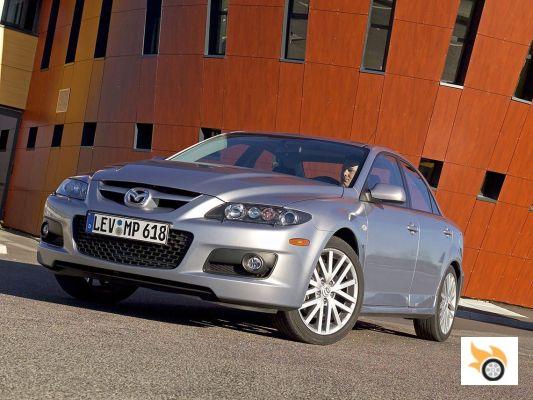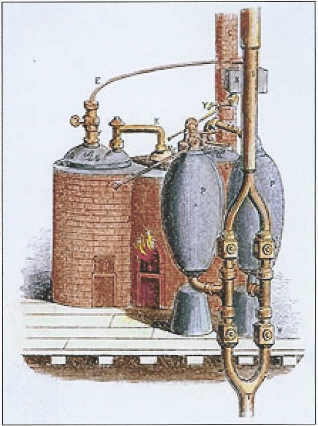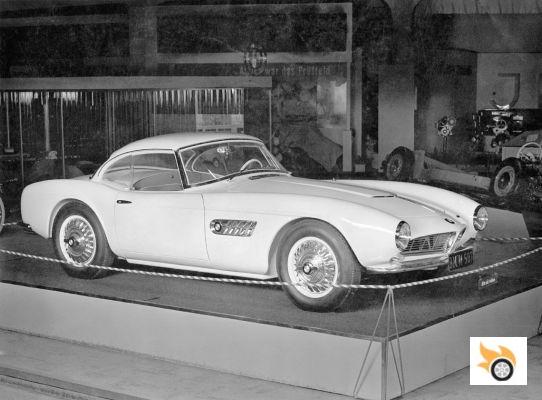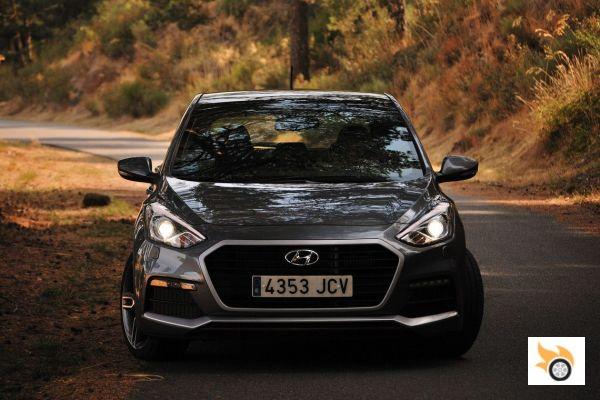But the moment of separation with Fiat came, and so first the Ronda and the Malaga were born. To be honest, they were models that were actually evolutions of the SEAT Ritmo (identical to the Fiat Ritmo) and later, the Ibiza, a very important model for the Spanish brand, the car that gave identity to the new and modern SEAT, that Spanish brand of which we can and should feel very proud.
Ibiza I: the icon
Already fully independent, the Spanish brand had to find a replacement for the outdated Fura (based on the 127) and the first Ibiza had to take advantage of the Ronda platform (inherited from the Fiat Ritmo) and the SEAT System-Porsche engines (developed in collaboration with the Stuttgart brand). The platform of a higher category meant a longer wheelbase and wider track than usual in the category, and - in addition to an excellent habitability - it brought character to the design, as the short overhangs and wide tracks made it look very well planted... Giugiaro had the makings of an attractive and habitable car, and as expected, good old Giorgetto didn't fail.
The designer from Turin chose to use a very functional aesthetic language, similar to other models designed by him at the time, but the Italian master took advantage of the position of the wheels very well, and designed a car in which nothing is missing or missing, in which the proportions and all the details were resolved in an exquisite and very elegant way. Its silhouette stands out with a clean and geometric design, slightly wedge-shaped and with a very short rear overhang. The side view is both functional and dynamic, with well-defined volumes. Perhaps the key is the strong slope of the rear window and the elegance and sobriety of the rear pillar design.
The waistline is quite high, but the lateral ribbing of the waistline, the pronounced fender bulges and the ribbing that gives visual continuity to the bumpers on the side show great attention to detail, and that Giugiaro knew how to make a high waistline not feel heavy. There is something of the Golf I - by the same designer - in the front, and its rear view is emphatic, with quite slanted side windows, and functional, horizontal rear lines that underline the car's width.
The first Ibiza had to look like a solid and honest car, and so Giugiaro avoided any temptation to add fireworks to its design, rather he took care that the design was clean, and the clearest sign is the way the tailgate meets the rear side window, a clean and elegant solution, and often, less is more. A lesson in design without artifice. The same cannot be said of the Nanjing Eagle and Soyat, made in China under license.
The inevitable restyling of the Ibiza was coherent and updated the design, adding painted bumpers -in the top versions- but keeping a practical black area, and replacing the light clusters and grille with a more fashionable design, but fitting in perfectly with the original design. It can't be said that it added character - quite the opposite - but at least it was coherent, something that can't be said of most restylings.
Ibiza II: reaffirming the model's character
Already under the umbrella of the VAG group, the Ibiza II would use the platform of the Polo III, and once again Giugiaro was entrusted with its design. The Italian designer was inspired by the Concept Proto-C -also designed by him for Seat-, and adapted it to proportions and silhouette that respected those of the first Ibiza.
Certainly, the aesthetic language was totally new, but some of its design details -such as the side glazing and the shape of its junction with the tailgate-, kept the DNA of the original model. Also very interesting was the evolution of the mid-height side ribbing, which added rhythm and visually lightened the always high waistline. The way the rear light clusters were joined together was also attractive and contributed to the character and visual width of the beautiful Ibiza II. A remarkable design.
A curious detail, and shared with its German brother was the design concept of the bumpers and skirts, and is that, contrary to the usual, the bumpers did not cover the entire lower part, so that some skirts -formed by the body itself- peeked out from underneath. This detail was visually interesting, as it reduced the "black" volume in the versions that did not have them painted, but these skirts were very exposed, and it was difficult to find an Ibiza that did not have them dented...
The first restyling of the Ibiza II affected the bumpers, which softened their design and increased their size, correcting the problem of the metal skirts. Personally, it seems to me one of the few redesigns that came to improve the original model, and the result is one of those cars with a design for which the years do not pass.
Then came the second restyling, which introduced the ribbing of the bonnet and the Munich-inspired grille that also characterized the Toledo II, the light clusters were also updated, and the rear ones increased in size, losing the strip that joined them... The result was not unattractive, but much less than the original. In its favor, it must be said that this second restyling recovered a black protective strip on the bumpers, something that -sincerely- I don't understand how it has disappeared from most of the cars in the city.
Ibiza III
Walter de Silva was responsible for the final design of the third generation of the Ibiza, although it seems that when he arrived, the design was already at a very advanced stage... It is clear that the idea was to respect part of Giugiaro's legacy, but introducing a modern and clean design, almost minimalist. I like its language and the harmony of its details, such as the shape of the A-pillar, or the harmonious shape of the front light clusters and the grille, although I don't like the radius with which the rear window is topped and the unnecessary ribbing that underlines the rear pillar at its base, and the perhaps excessively bulbous shapes.
Anyway -and in my opinion-, the problem of the Ibiza III lies more in the proportions: the waistline looks too high, the bulging section of the sides makes it visually heavy, the tracks seem too narrow... the car seems short, tall, and narrow. It's the least "settled" Ibiza of them all... It's not the aesthetic language itself - which is actually quite nice - and that's why the sporty versions - with big wheels, and wider tracks - were much more attractive.
Ibiza IV
For this generation, Seat thought the new Ibiza should have an expressive design and I think they were right. They entrusted the design to Luc Donckerwolke -who had previously worked for Lamborghini-, and I think it's fair to say that Luc did a great job giving an interesting twist to the brand's design, forgetting the rounded design language of the Ibiza III -and Leon II- and reinterpreting the original side ribbing of the Leon, and adding a second rear ribbing, which slanted forward. It also added some daring oblique ribs at the front and almost completely forgot about horizontal lines... A daring, personal design that was ahead of the current fashion for expressive designs, with numerous oblique ribs.
For this generation, Seat decided that the three-door and five-door body styles would have a distinct personality, with a three-door with a more coupé design (called Sport Coupé), and a five-door clearly inspired by the Leon II. Personally, and taking into account the typical public of the three and five-door versions, I think the five-door version has too many "ideas" and sloping lines at the rear, and would have been more successful with a cleaner and more conservative design. On the other hand, this generation had a family version (called Sport Tourer).
Well, you may like it more or less, but there's no doubt that the Ibiza IV has personality, and that it achieved its goal of reaching a young audience. It also laid the foundations for the aesthetic language of the current SEAT, and was one of the first European cars in its category with decidedly expressive lines. A great job Luc!
The Bocanegra series deserves a special mention, with its bold black painted front end, paying homage to the beautiful 1975 Seat 1200 Sport.
The restyling came and it was deeper than it may seem and although it perhaps lost some of its daring character - the oblique ribs on the front disappeared - it gained maturity and horizontality, which undoubtedly allowed it to reach a wider public.
Ibiza V
In the same way that the Leon II was inspired by the Ibiza III, it could be said that the new Ibiza V is inspired by the Leon III. It seems that the "little brother" has learned from its big brother, and is now much more mature. I would say that this time, the aim of Alejandro Mesonero-Romanos (SEAT's design director) has been to achieve a design that would also appeal to a more mature clientele with more sober tastes, and I would say that he has succeeded. Everything about the new Ibiza suggests more quality and sophistication, and with its new design, the mature public will be able to drive it without looking like they've borrowed the car from their child - or grandchild.
Looking at the design, the first thing that struck me is that the front and rear side ribs are now almost parallel. This simplifies the side design, bringing harmony and tension in equal parts. It is very interesting the way in which the rear side ribbing joins the optical groups, and the marked ribbing at the bottom of the doors is responsible for lightening this area, and add movement to the side view, and is that the car should also like a young audience. The side glazing - with a lighter rear pillar and a slightly larger third pane - contributes to an overall design that suggests more formality. Overall we could say that the side view is characterized by an interesting compromise between functionality and character, a design that will please many, and displease very few.
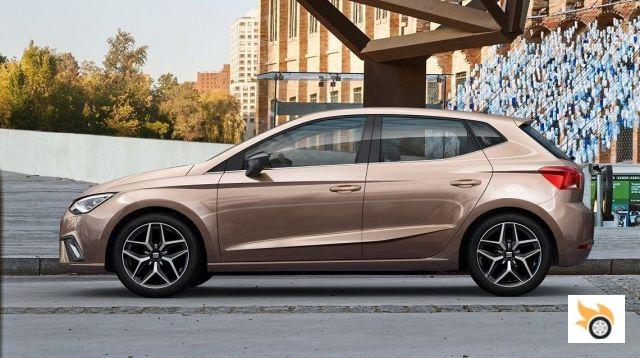
If we look at the car from the rear ¾, it is attractive and well resolved - one of the best I've seen lately in compact cars - with some really coherent and very creative shapes. There is rhythm and ribbing, but only as much as is necessary to lighten the view and give it character. It's not easy to design a two-volume with a new, beautiful, functional and coherent rear part... and Alejandro has achieved it. Congratulations!
The front is clearly reminiscent of the Leon, but the shape of the headlights - which almost look triangular with their daytime running lights - is very attractive, and I also like that the - seemingly inevitable - false grilles on the sides are smaller and more discreet this time. Overall, the trapezoidal shapes have a bit more character than on the Leon, and the ribs on the front bonnet underline the droop of the bonnet. Interesting.
Of course, the 87 mm increase in width, the 60 mm longer wheelbase, and the larger diameter wheels make it look more poised and serious - something that in a way reminds me of the Ibiza I - and as Ian Callum says, proportions are 70% of the aesthetics of a car. Overall, the design of the new Ibiza looks very mature, suggesting quality and functionality, but without losing the Latin and emotional character of the brand. I'm convinced that it will appeal to a wide range of buyers, and -I know the market is not for whims-, the only thing I miss is a three-door version with a little more coupe character.
New Bocanegra: The dream
And now, allow me to share a dream with you: do you remember the Seat 1200 Sport, that coupé based on the SEAT 127 (the grandfather of the Ibiza)? (the grandfather of the Ibiza). Well, as I'm a romantic (I worked at Inducar, the Spanish company that designed it) I've taken the time to make these sketches - yes, I know they wouldn't pass an exam - to see if there's any luck and SEAT picks up the gauntlet and builds a real coupé based on the Ibiza, the "Bocanegra" of the 21st century.
It would be a car that would make it clear that SEAT is a brand with history, a brand of passionate people, for passionate drivers.





